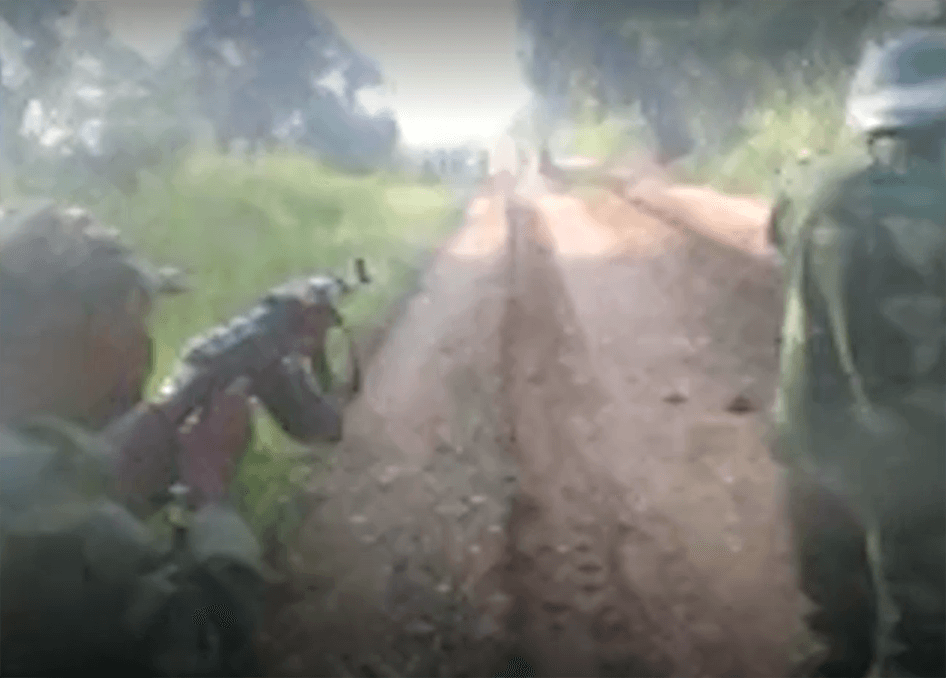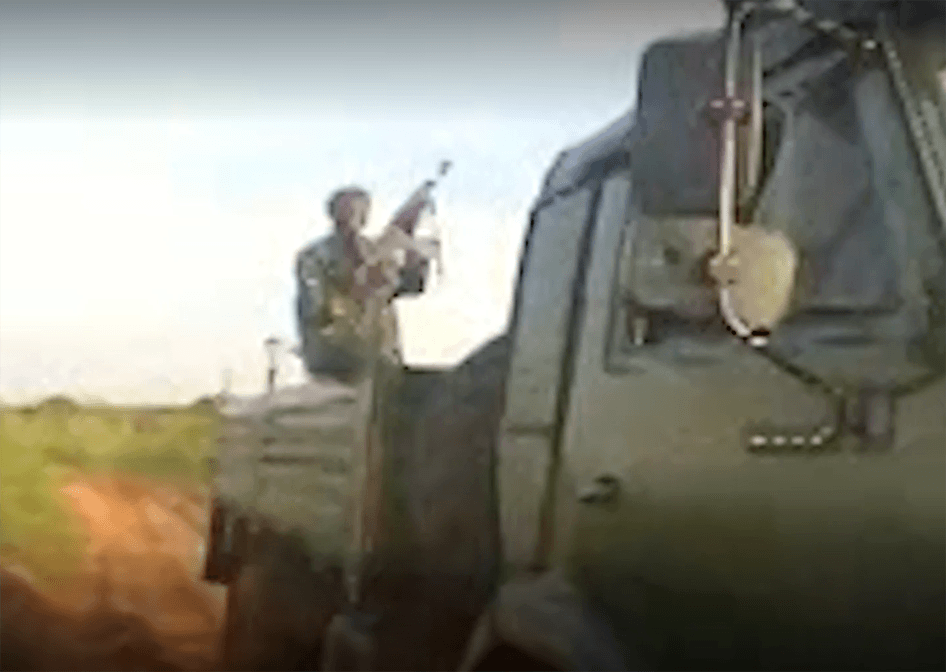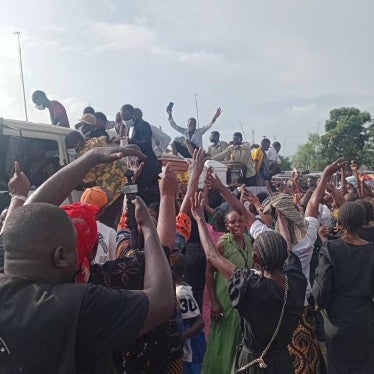Update (March 24, 2017) – Military justice officials in the Democratic Republic of Congo announced on March 18, 2017 that they had arrested and charged seven soldiers suspected of killing at least 13 alleged militia members in Mwanza Lomba, Kasai Central in February. The killings were captured in a video posted on the internet on February 17.
The UN Mission in the Congo, MONUSCO, offered their support to the investigation, but they were blocked from accompanying the Congolese magistrates on the ground.
“The arrest of soldiers allegedly implicated in serious abuses in the Kasai region is an important step in curtailing the violence,” said Ida Sawyer, Central Africa director at Human Rights Watch. “But Congolese judicial officials have shown little ability or willingness to independently investigate the military chain of command to examine the role of high-ranking commanders in unlawful killings and other crimes.”
(Kinshasa) – Democratic Republic of Congo authorities should fully and impartially investigate killings by alleged Congolese army soldiers in the central Kasai area, Human Rights Watch said today. A video posted on the internet on February 17, 2017, shows men in Congolese army uniforms fatally shooting at least 13 alleged militia members, some of whom are carrying sticks and slingshots.
The shootings appear to be an excessive use of lethal force in a law enforcement situation, Human Rights Watch said.
“This video captured the horror of these shootings that the Congolese government might otherwise have swept under the carpet,” said
Ida Sawyer, Central Africa director at Human Rights Watch. “Judicial officials, with United Nations help, should immediately conduct a full and impartial investigation into these killings and other alleged abuses in the Kasai provinces so that those responsible can be brought to justice.”
The seven-minute
video shows several soldiers approaching and then opening fire on a group of alleged members of the Kamuina Nsapu militia, including two women and several apparent children. Several of the seriously wounded are shot at point-blank range, as one of the soldiers calls them “animals.” Some of the soldiers later mistreat and violate the dignity of the bodies.
In July 2016, large-scale violence erupted in Central Kasai province and later spread to neighboring Kasai and Kasai Oriental provinces. The UN Joint Human Rights Office has
documented the killings of more than 280 people since July.
The incident shown in the video reportedly took place on the road toward Ntenda in the border area between Kasai Oriental and Kasai Central provinces. At least one soldier in the video says he is a member of the army, and an army truck appears in the video. While the images in the video correspond with reports Human Rights Watch has received about recent violence in this area, it has not been possible to confirm the video’s authenticity or source.
On February 17, 2017, Communications Minister Lambert Mende told the New York Times that the video was not filmed in Congo and that it was an attempt by nongovernmental organizations “to destroy the image of the DRC.” A day later, he said the video was “in all likelihood a montage” created by the opposition, and said that the government had already arrested two low-level officers because of the “excesses and abuses” during operations in Kasai Oriental in late December 2016. Human Rights Minister Marie-Ange Mushobekwa told Reuters on February 18, 2017 that an investigation had been opened into the video.
On February 22, following mounting international pressure, including from the European Union, France, and the United States, the government announced it had sent a commission of inquiry to the area. The UN high commissioner for human rights also called for an investigation, saying, “It is time to stop a blunt military response that does nothing to tackle the root causes of the conflict between the government and local militias but instead targets civilians on the basis of their presumed links to the militias.”
Another video shows an unarmed girl bleeding on the ground outside the governor’s office in Kananga, capital of Central Kasai province. Men are heard interrogating her and refusing to take her to the hospital. They kick her twice in the face. A witness later told France 24 that soldiers shot her on January 27, the day the video was filmed, and that she died later that day. He also saw at least three other dead bodies.
The UN Basic Principles on the Use of Force and Firearms, which apply to military personnel carrying out law enforcement, state that officials “shall, as far as possible, apply non-violent means before resorting to the use of force and firearms,” and that firearms should only be used “in self-defense or defense of others against the imminent threat of death or serious injury.” Officials need to give clear warnings of an intent to use firearms, with sufficient time for the warning to be observed.
The Office of the UN High Commissioner for Human Rights (OHCHR) received reports that Congolese army soldiers killed at least 101 people, including 39 women, during an outbreak of violence involving the Kamuina Nsapu militia between February 9 and 13, in and around the town of Tshimbulu, in Central Kasai province. According to several sources, “soldiers opened fire indiscriminately with machine guns when they saw the militia fighters, who were armed mainly with machetes and spears.” The Nsapu militia has reportedly recruited large numbers of children. Militia members reportedly believe in magic powers that they say makes them impervious to bullets.
In recent years, this region of central Congo has been largely peaceful. It is the home ground and main base of support for the opposition party Union for Democracy and Social Progress (UDPS) and the party’s late president, Étienne Tshisekedi, who died on February 1. The violence is purportedly about customary control over local chieftaincies, but there are also clear ties to national political dynamics, with the Congolese army backing the leadership of people seen to be loyal to President Joseph Kabila and his political coalition, and the militia groups supporting people seen to be closer to the opposition.
Tens of thousands of people have been affected by the violence in the Kasais, according to the UN Office for the Coordination of Humanitarian Affairs (OCHA).
The violent situation in the Kasais is one of several across the country that have intensified in recent months, leaving several hundred dead, including in Tanganyika and North Kivu provinces, as well as in the capital, Kinshasa. Some of the violence is linked to Kabila’s efforts to remain in power beyond the end of his constitutionally mandated two-term limit on December 19, 2016. A fragile political deal mediated by the Catholic Church allows him to stay in power until elections, which are due to be held by the end of 2017. But there are huge challenges to carrying out the deal, and serious doubts persist about whether Kabila and other political leaders are genuinely committed to organizing elections, Human Rights Watch said.
The UN Human Rights Council will discuss the human rights situation in Congo at its upcoming session, beginning at the end of February. Given the scale of violence in the Kasais and other parts of Congo, and the possibility of further deterioration of the human rights situation in the coming months, the council should assign an independent expert or team of experts, with the capacity for rapid response, to monitor and report on the situation in Congo.
The UN Security Council, the US, and the European Union should also consider imposing additional targeted sanctions, including travel bans and asset freezes, against those found to be most responsible for serious abuses in the Kasais and elsewhere in Congo.
“Localized violence, armed conflicts, and serious political tensions throughout Congo heighten concerns that the country is a powder keg ready to explode,” Sawyer said. “High-level international engagement is crucial to help protect civilians from further violence, press for accountability for serious abuses, and ensure that timely, credible elections are held to build a more democratic and rights-respecting country.”








